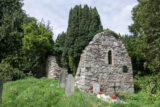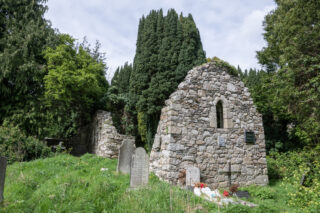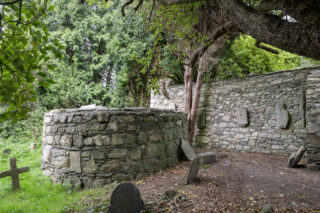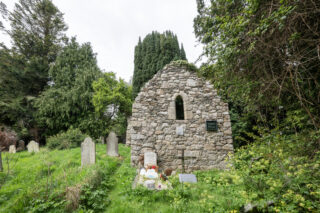Rathmichael Ecclesiastical Site
A monastery dedicated to the early Irish saint Mac Táil
Unguided sitesFógra
WARNING: It should be noted that these sites are unguided and a level of care and caution should be maintained during all stages of your visit. The Office Of Public Works (OPW) will not be held responsible for any damages, injuries, or losses that occur
Rathmichael Ecclesiastical Site
The early ecclesiastical enclosure of Rathmichael, founded by St Comgall of Bangor in the 6th century, was dedicated to the early Irish saint Mac Táil. The ecclesiastical site is enclosed by a cashel-like structure, which many believe was the site of a Bronze Age hillfort. The stump of the round tower, built in the 10th century of quartz, granite, limestone and sandstone blocks, is 1.8m tall. It is unknown if only the base of the tower was built, or indeed if the tower had fallen and this is all that remains. Later, the round tower became known as the Skull Hole, as it became a place for disturbed human remains to be placed.
East of the round tower stands the ruins of St Michael’s Church. Its medieval nave and chancel holds many grave-slabs, known as Rathdown-types. These Rathdown-types of grave-slab have carved incisions influenced by Hiberno-Norse art. Some of the art is represented as herringbone patterns, cup-marks, concentric circles, semi-circular loops and horizontal and vertical lines. This church dates to the 13th century and was likely built over an earlier church.
During 1954 renovations by the OPW’s predecessor, the Board of Works, a cross was found. Known as the Rathmichael Cross fragment it was 0.4m tall, and made of granite. It was believed to originally have been free standing with each side bearing a cross-in-circle in false relief.
Visit Historic Environment Viewer for more information on Rathmichael Ecclesiastical Site
Protect our Past - Click here to read about the importance of protecting our country’s unique heritage sites
This national monument is protected in accordance with the National Monuments Acts 1930 to 2014




